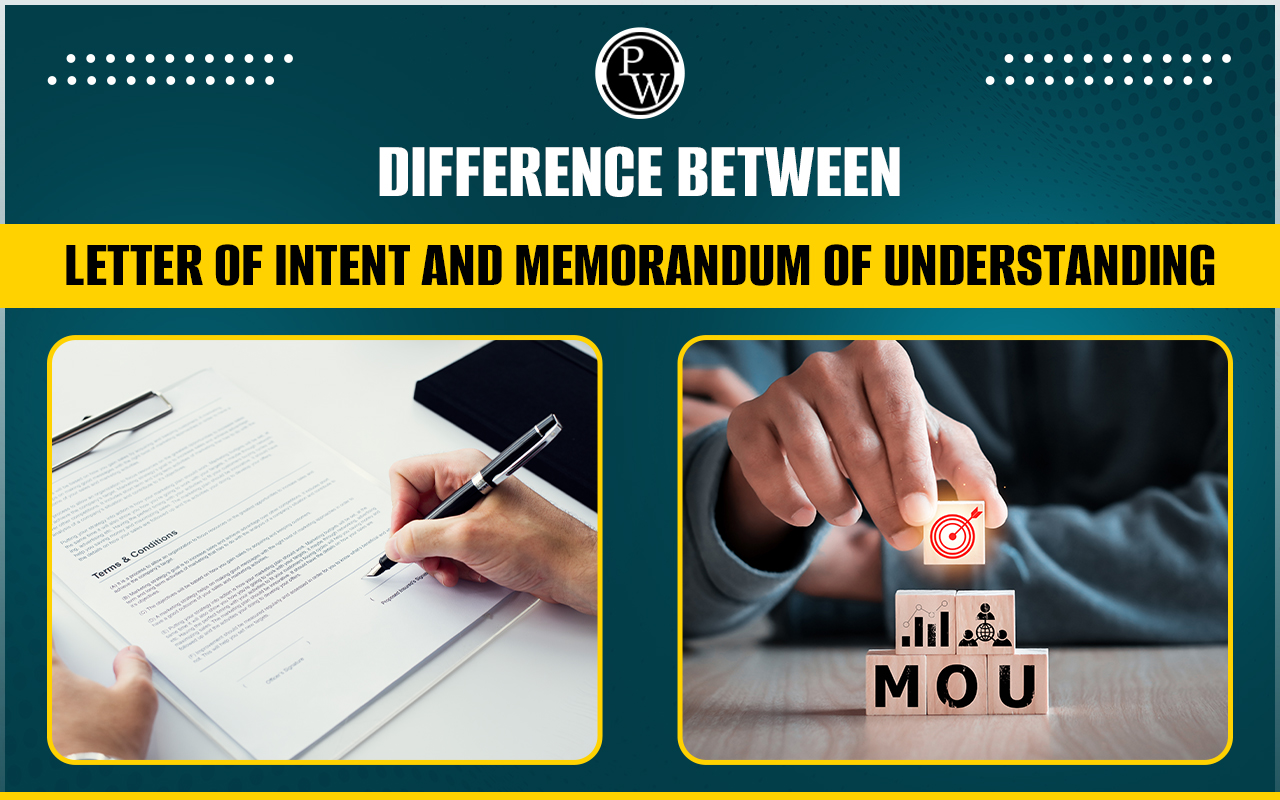
Businesses and other entities often employ diverse documents to recognize and confirm different facets of an agreement or understanding when engaging in business with another party. While both serve as preliminary documents outlining the intentions of parties involved in a potential agreement, the two have distinct differences. Understanding these disparities is crucial for businesses to choose the most appropriate document for their needs and navigate the negotiation process effectively. In this article, we delve into the nuances that set LoIs and MoUs apart, examining their purposes, binding nature, level of detail, and other key aspects. By clarifying these differences, businesses can make informed decisions and lay the groundwork for successful collaborations and transactions.
What is a letter of intent?
A Letter of Intent (LoI) is a document that signifies an initial commitment by one party to engage in business with another. Commonly used in mergers and acquisitions, it outlines the preliminary terms of an agreement. Although typically nonbinding, the LoI is a crucial document that details the key terms agreed upon by the parties involved. The information captured in the LoI often becomes part of the final purchase agreement, a legal document specifying the transaction details. Additionally, the LoI serves as a guide or roadmap for the process, highlighting the topics to be discussed outside the negotiation.What is a Memorandum of Understanding?
A Memorandum of Understanding (MOU) is an agreement between two or more individuals or organisations that outlines the understanding between all parties and describes their respective contributions and responsibilities. This agreement details each party's terms, conditions, roles, and responsibilities. Often serving as the initial step towards a formal contract, the MOU involves no financial transactions. It typically specifies the transaction timeline, the agreed price, and the payment method. Additionally, it may include information about warranties, a detailed list of assets and liabilities, and the operational status of machinery and equipment at the time of the agreement.Difference between Letter of Intent and Memorandum of Understanding
A Letter of Intent (LoI) and a Memorandum of Understanding (MoU) are preliminary agreements that outline the terms and intentions of a business relationship or transaction. While they share similarities, they differ in purpose, binding nature, level of detail, and structure. Understanding these differences can help organisations choose the appropriate document for their needs.| Difference between Letter of Intent and Memorandum of Understanding | ||
| Aspect | Letter of Intent (LoI) | Memorandum of Understanding (MoU) |
| Purpose and Usage | Outlines preliminary terms before a formal contract | Documents a mutual understanding on a project or partnership |
| Binding Nature | Generally non-binding, but may contain some binding provisions | Can be either binding or non-binding, depending on the intent and language |
| Level of Detail | Less detailed, focusing on key terms and high-level agreements | More detailed, outlining specific roles, responsibilities, and conditions |
| Structure and Content | Structured like a letter with an introduction, body, and conclusion | Structured more like a formal agreement, often with sections and clauses |
| Typical Use Cases | Mergers and acquisitions, partnerships, major business deals | Collaborations, joint ventures, partnerships |
| Formality | Formal but not as comprehensive as a final contract | Formal and can be quite comprehensive |
| Focus | Key terms and intent to proceed with a transaction | Detailed roles, responsibilities, timelines, and conditions |
| Examples of Content | Intent statements, key terms, non-binding clauses | Roles, responsibilities, timelines, conditions, sometimes binding clauses |
| Initial Step | First step towards a formal and binding agreement | Often the first formal agreement outlining mutual understanding |
| Revision and Negotiation | Often followed by detailed negotiations leading to a final contract | May be revised or serve as a basis for a more detailed agreement later |
Tips for writing a letter of intent or a memorandum of understanding
Here are some tips for an organisation to consider when writing a Letter of Intent (LoI) or a Memorandum of Understanding (MoU):- Discuss the Document with All Parties : Ensure all parties involved have discussed the document beforehand. The contents of a LoI or MoU should not surprise any of the parties, so it’s important that everyone involved agrees on the terms and responsibilities before drafting. This helps ensure that all parties understand the details listed in the document.
- Consider Hiring an Attorney : Although LoIs and MoUs are typically not legally binding, hiring an attorney to assist in their creation can be beneficial. An attorney can help decide on the terms and conditions of the agreement while ensuring compliance with relevant laws and regulations.
- Maintain a Professional Tone : When drafting a LoI or MoU, use a professional tone and avoid casual language. These documents are often the first step in creating a formal contract or other official document, so using formal language is important.
- Proofread the Document : Once a draft is completed, have professionals from all organisations or an objective third party, such as an attorney, review it for spelling or grammar errors. This review helps ensure all necessary information is included and the document is error-free before signing.
- Keep the Document Simple and Clear : While it may be tempting to use business jargon and industry-specific terms, it’s crucial that all parties clearly understand the document. In the early stages of a business negotiation, focus on overall objectives and avoid complex details to ensure clarity and mutual understanding.
- Outline Roles and Responsibilities : Specify the roles and responsibilities of each party involved. This helps prevent misunderstandings and ensures that everyone knows what is expected of them.
Begin your journey towards academic excellence in Commerce with our comprehensive Class 11 Commerce courses . Master the CBSE syllabus with expert guidance and ace your exams. Enroll now!”
Difference between Letter of Intent and Memorandum of Understanding FAQs
Which is stronger, an LoI or an MoU?
Is an LoI a legal document?
What is a Letter of Intent (LoI)?
How strong is a Letter of Intent?













